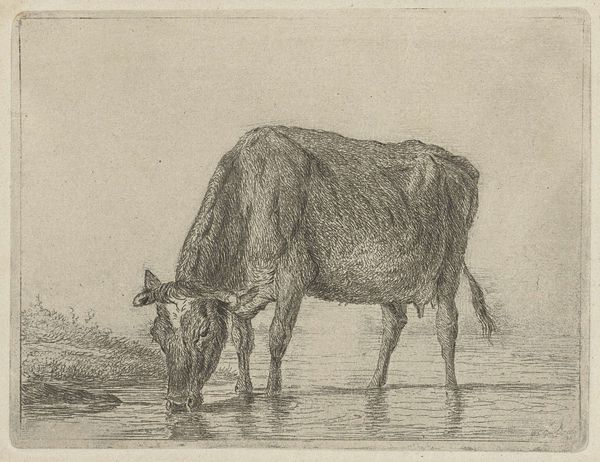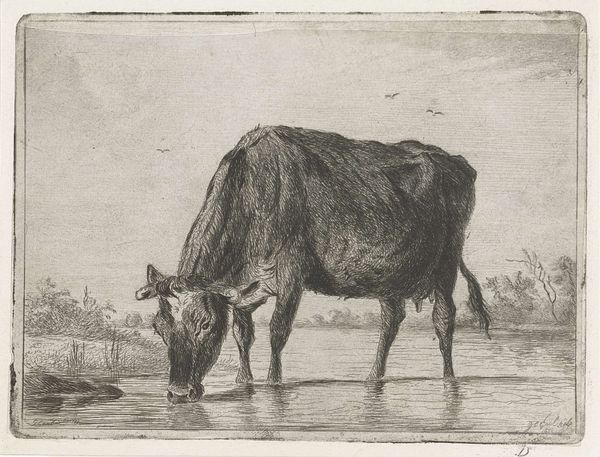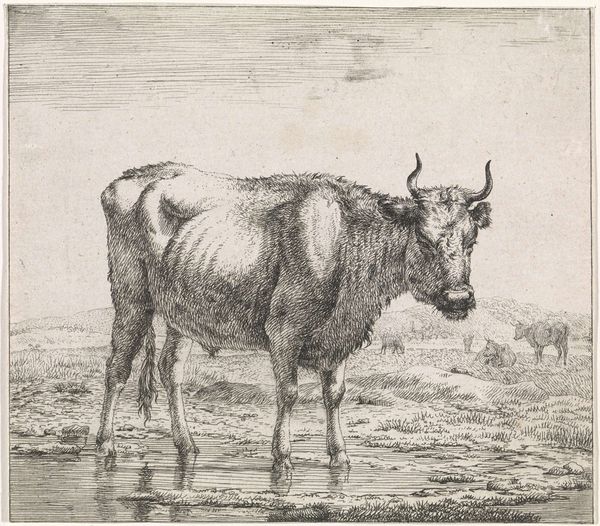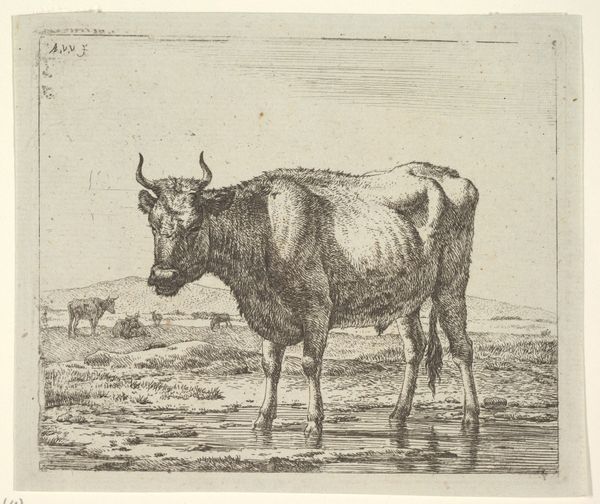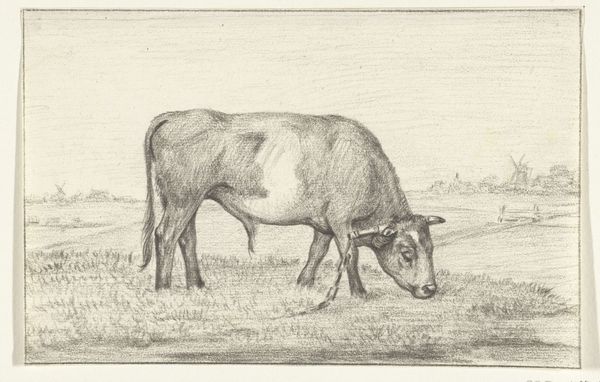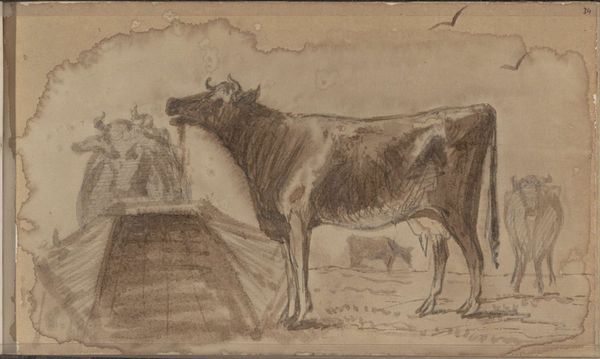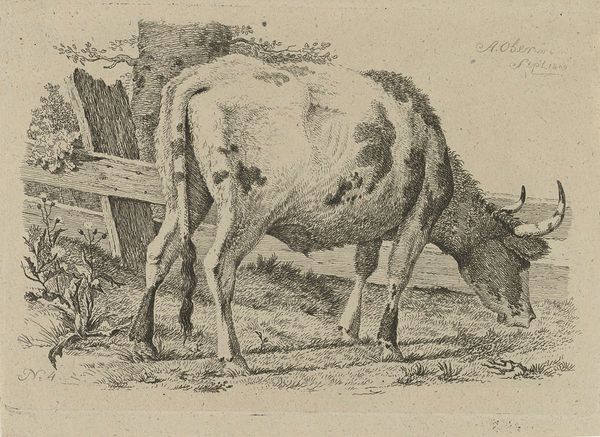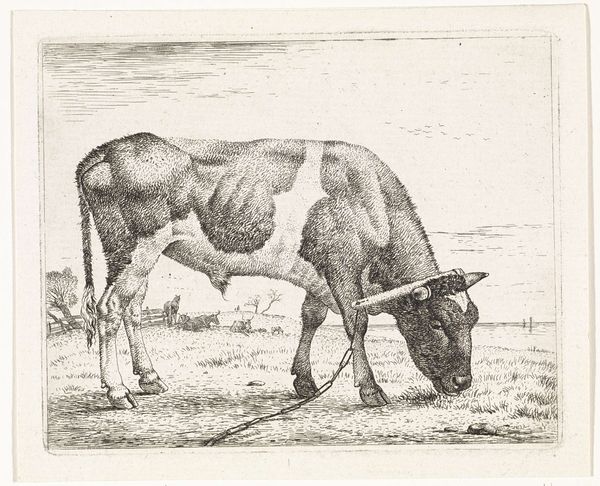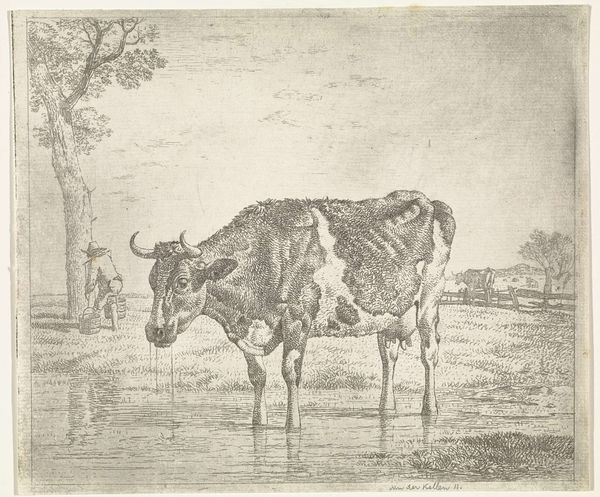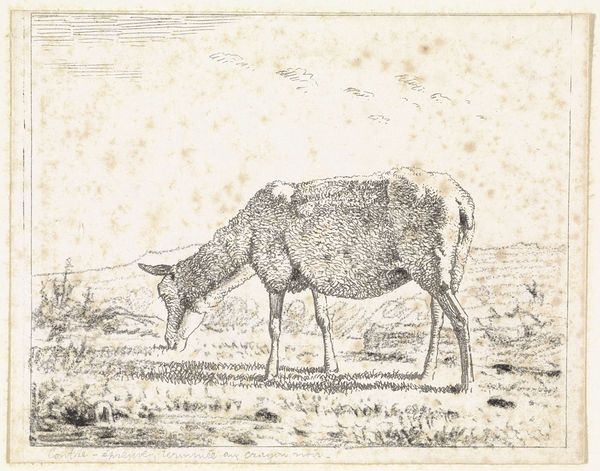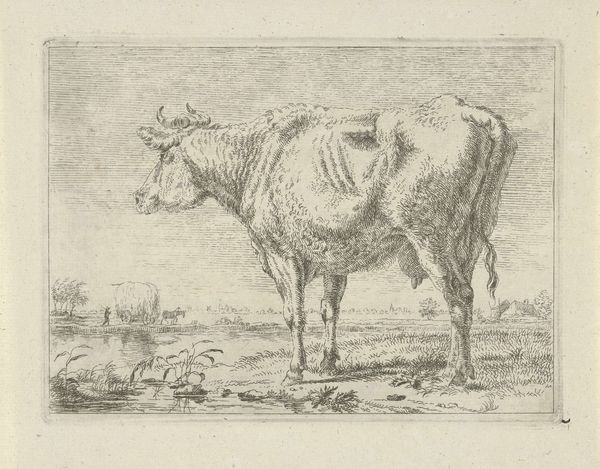
#
pencil drawn
#
amateur sketch
#
light pencil work
#
pencil sketch
#
incomplete sketchy
#
charcoal drawing
#
possibly oil pastel
#
pencil drawing
#
underpainting
#
watercolor
Dimensions: height 115 mm, width 150 mm
Copyright: Rijks Museum: Open Domain
Editor: This is Jacobus Cornelis Gaal's "Cow Drinking From a Pool," created in 1851. It's a pencil drawing, and I’m struck by its simplicity. The cow looks so ordinary, yet the artist chose to depict this very common scene. What do you see in this piece? Curator: I see a quiet commentary on the everyday lives that are often overlooked in grand narratives of history. Gaal, working in a period of significant social change, perhaps wanted us to reflect on the role of agriculture, of labor, and the animals that were so central to the Dutch economy and culture. Editor: So you see it as a commentary on labor? It just seemed like a simple pastoral scene to me. Curator: Consider the time. The Netherlands was undergoing industrialization. Romanticizing rural life became a way to critique those rapid changes and the social disparities that came with it. Look at the deliberate choice of such a common subject – the cow. What does the act of drinking from a puddle evoke for you? Editor: Maybe the basic needs of existence? A reminder that life, even for this cow, isn’t always easy or picturesque? Curator: Precisely! And doesn't this contrast sharply with the idealized depictions of nature that were popular then? Gaal subtly centers the unseen, the undervalued. He questions our assumptions about beauty and worthiness of representation. Do you think his choice of a muted pencil drawing amplifies this message? Editor: Definitely. The lack of vibrant color reinforces the unvarnished reality he's portraying. I hadn’t considered how deeply rooted this seemingly simple sketch is in its socio-historical context. Curator: It reminds us that art isn’t made in a vacuum. By understanding these layers, we start to see the artist's intention and what stories the artwork tells about its time and, ultimately, our own. Editor: I’ll definitely look at art with more questions about its background now. Thanks!
Comments
No comments
Be the first to comment and join the conversation on the ultimate creative platform.
